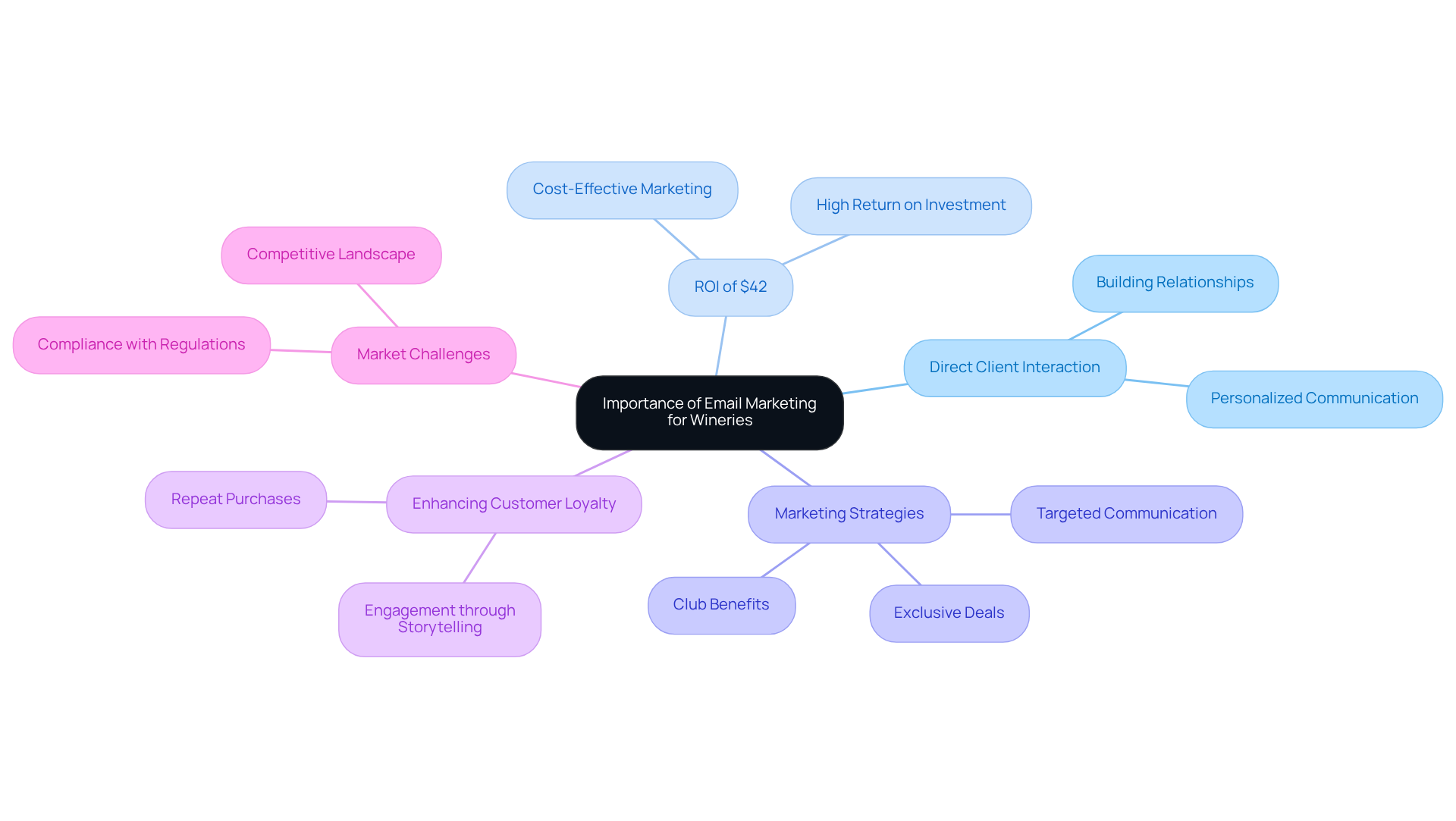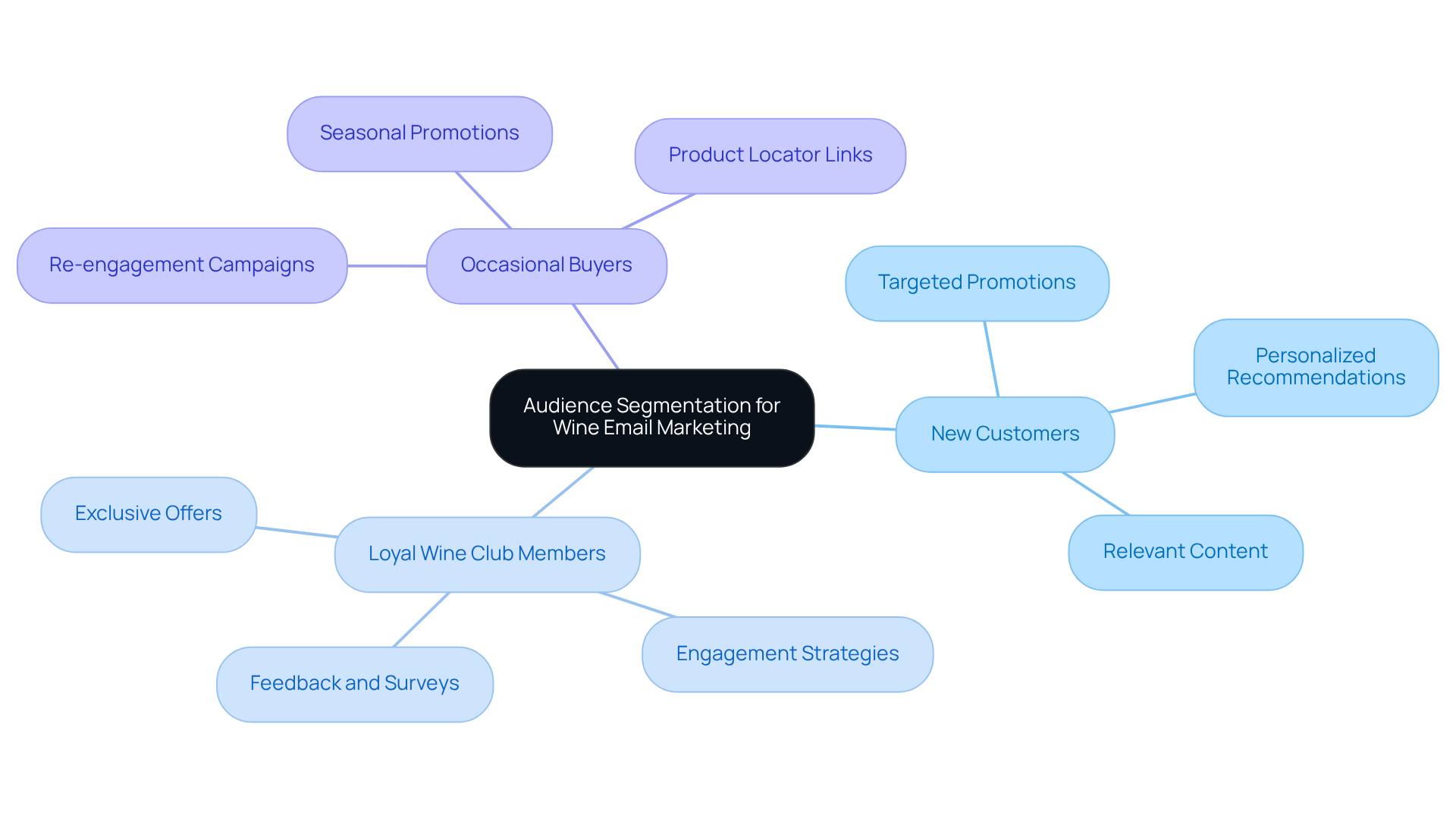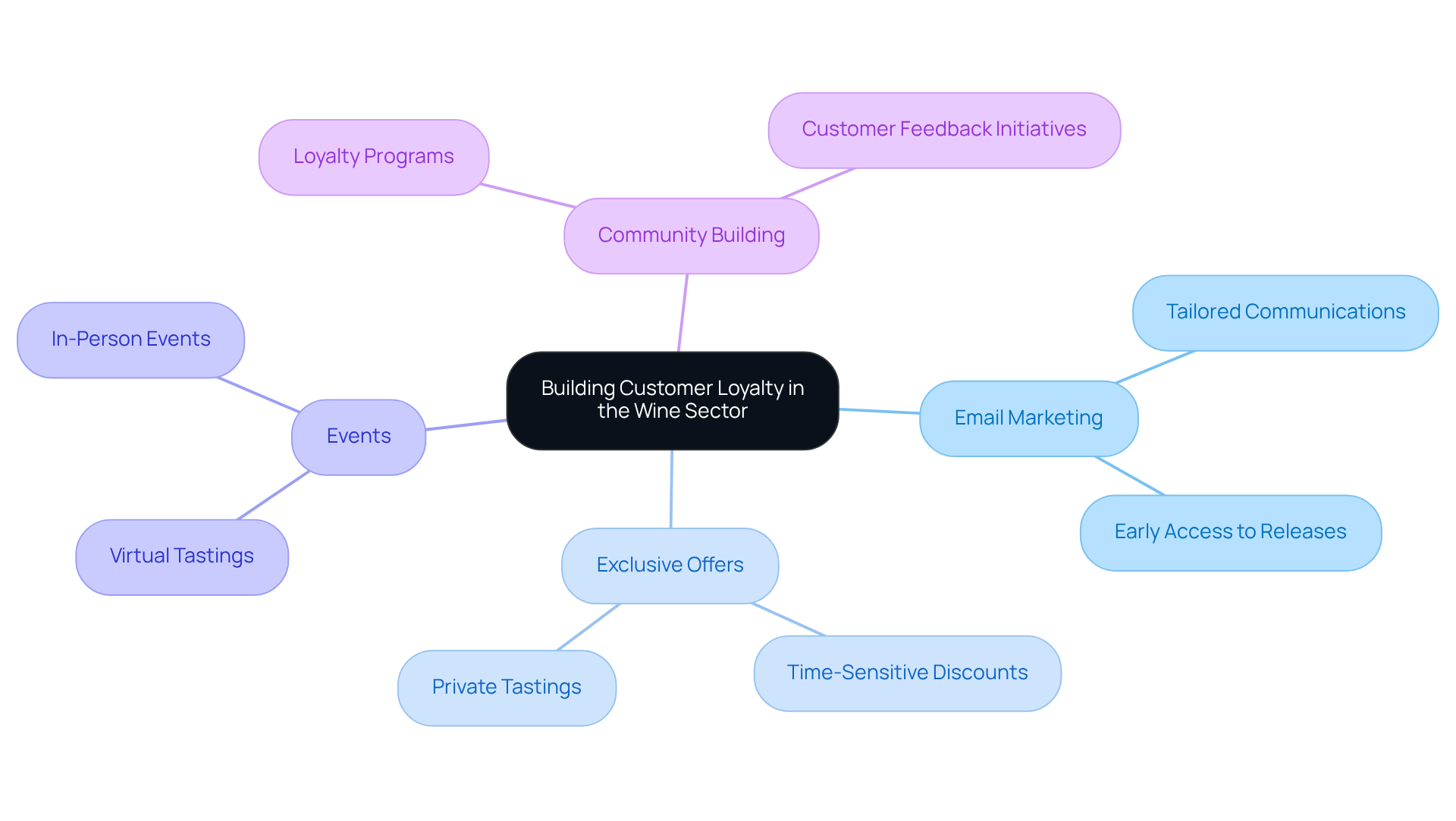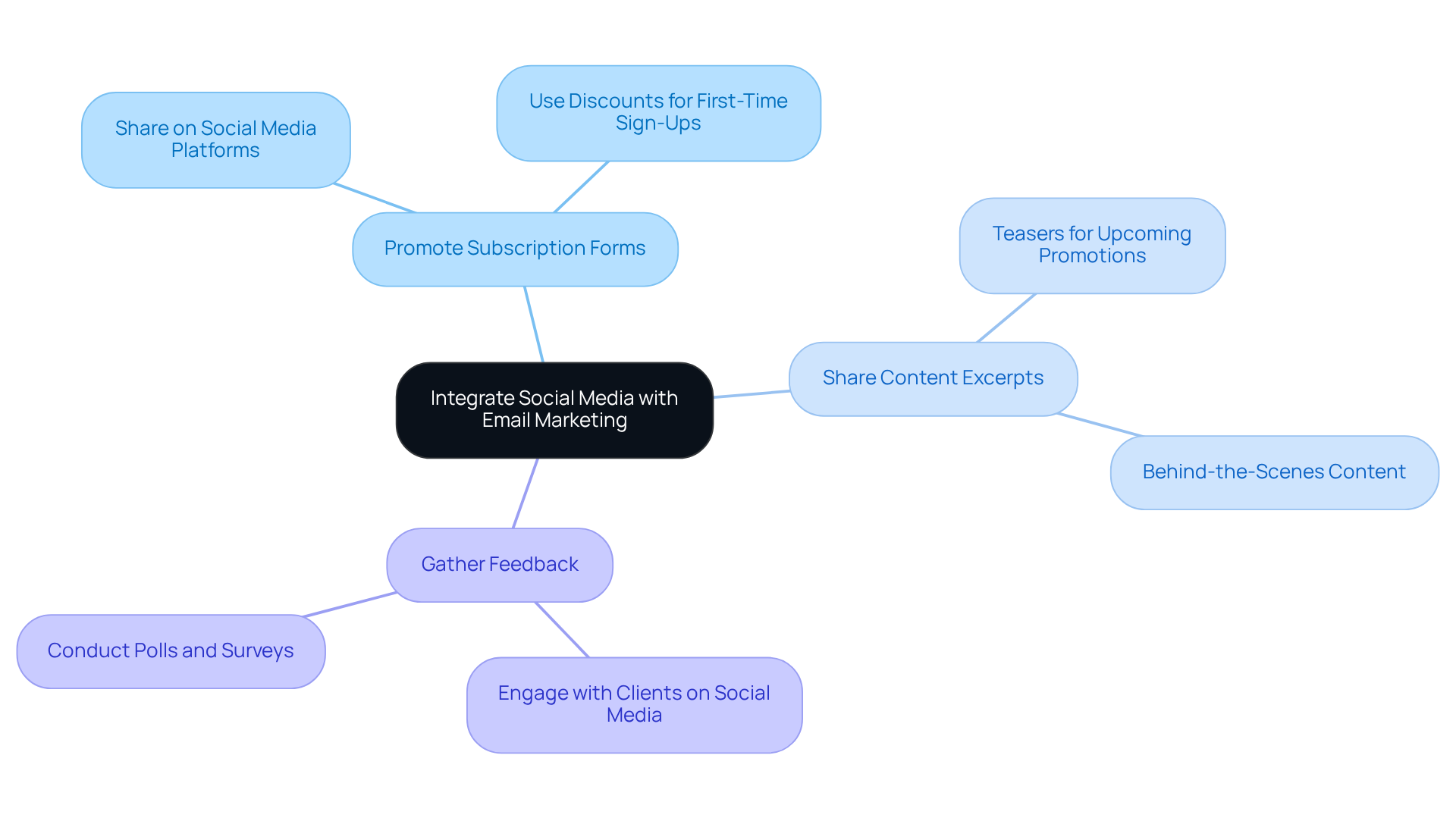Overview
This article delineates four best practices for implementing effective wine email marketing strategies.
- It underscores the critical role of audience segmentation.
- Exclusive offers enhance customer engagement.
- Social media integration fosters loyalty.
- Empirical evidence supports these practices, demonstrating that targeted communications can substantially boost revenue and improve customer retention.
By adopting these strategies, wineries position themselves for sustainable growth in an increasingly competitive market.
Introduction
Email marketing has emerged as an indispensable tool for wineries, enabling them to forge direct connections with consumers and enhance brand loyalty. With the potential for an impressive return on investment, wineries can harness this strategy not only to share their unique stories but also to transform casual buyers into dedicated club members.
However, as the wine industry becomes increasingly competitive, the challenge lies in effectively engaging diverse audiences while navigating the complexities of digital communication.
How can wineries leverage targeted email marketing to distinguish themselves and cultivate lasting relationships with their customers?
Understand the Importance of Email Marketing for Wineries
Wine email marketing serves as a critical medium for vineyards, enabling direct interaction with clients and fostering enduring connections. With an impressive for every dollar spent, effective promotional campaigns can significantly elevate brand visibility and drive direct-to-consumer (DTC) sales for family-owned vineyards.
By leveraging digital marketing, vineyards can articulate their unique narratives, announce new releases, and keep clients informed about events and promotions, ultimately enhancing customer loyalty and encouraging repeat purchases. A pivotal strategy is transforming occasional purchasers into devoted club members, achievable through targeted communication campaigns that highlight exclusive deals and club benefits.
In an increasingly competitive landscape, a robust online presence not only differentiates a vineyard from its competitors but also plays a crucial role in achieving sustainable growth. Successful communication campaigns within the wine sector often utilize wine email marketing with personalized content and targeted messaging, ensuring that subscribers feel valued and engaged.
As vineyards confront market challenges, the strategic use of digital communication will remain essential for cultivating lasting relationships with consumers and implementing transformative DTC strategies. Furthermore, vineyards should consider strategic capital planning to support their growth initiatives and ensure compliance with consent regulations to avoid penalties that can reach $10 million for each violation.
As Russ Shumaker aptly states, 'The straightforward response is that messaging campaigns are effective.

Segment Your Audience for Targeted Engagement
Dividing your contact list is essential for enhancing engagement and conversion rates, particularly for family-owned wineries utilizing wine email marketing to strive for success in a competitive market. By categorizing your audience based on factors such as purchase history, demographics, and preferences, you can effectively use wine email marketing to tailor your messaging to meet their specific needs.
For instance, creating segments for:
- New customers
- Loyal wine club members
- Occasional buyers
enables you to utilize wine email marketing to send targeted promotions, personalized recommendations, and relevant content that speaks directly to each group's interests. This targeted approach not only enhances brand storytelling but also aligns with by utilizing wine email marketing to transform casual buyers into loyal club members.
Research indicates that wine email marketing campaigns can lead to a remarkable 760% rise in revenue, showcasing the effectiveness of personalized communication. Furthermore, nearly 50% of marketers believe that sign-up forms are the best tool for capturing basic demographic details, which is essential for effective segmentation.
Targeted communications through behavioral segmentation in wine email marketing can account for 58% of total revenue, further underscoring the financial advantages of these strategies. As Ben Salisbury aptly points out, "Effective digital marketing involves delivering the appropriate content to the suitable subscribers at the optimal moment," fostering long-term loyalty and sales expansion. This ensures that family-owned vineyards can obtain the necessary funding and flourish for generations.

Promote Exclusive Offers and Events to Build Loyalty
Developing unique promotions and events serves as a powerful strategy for cultivating loyalty among clients in the wine sector, particularly when enhanced by wine email marketing and supported by Enocap's strategic capital advisory services. Wineries can foster a sense of belonging and appreciation among their clientele by utilizing to offer newsletter subscribers early access to new releases, exclusive discounts, or invitations to private tastings. For instance, a time-sensitive discount on a new vintage exclusively for subscribers can drive immediate purchases and enhance client engagement. Notably, research shows that 81% of consumers in surveyed nations discovered new brands online during the pandemic, underscoring the effectiveness of wine email marketing in attracting new clients through exclusive promotions.
Additionally, hosting virtual or in-person events tailored for email subscribers can strengthen their connection to the brand and improve wine email marketing. These initiatives, particularly wine email marketing, not only encourage purchases but also create a community around the winery, thereby enhancing loyalty and promoting word-of-mouth referrals. Loyal patrons are significantly more likely to share their positive experiences, which amplifies the brand's reach and visibility. Furthermore, in wine email marketing, customized messages are opened 29.3% more frequently than generic ones, emphasizing the importance of tailoring communications to your audience.
Incorporating these strategies into your wine email marketing efforts can lead to a more engaged audience, ultimately driving sales and reinforcing brand loyalty. As highlighted, "Wine digital promotion offers an affordable method for vineyards to tailor experiences and boost client loyalty." By implementing these strategies, in conjunction with Enocap's insights on building sustainable direct-to-consumer channels and strategic capital planning, wineries can effectively enhance their customer relationships and cultivate long-term loyalty through wine email marketing.

Integrate Social Media to Enhance Email Marketing Efforts
Integrating social media with your messaging marketing efforts can dramatically enhance your promotional strategy. By actively promoting your subscription sign-up forms across social media platforms, you can effectively broaden your subscriber base and engage with a wider audience. Moreover, sharing excerpts from your correspondence on these platforms can entice followers to subscribe for more exclusive content.
For instance, a winery might share a teaser about an upcoming wine email marketing message that highlights a special deal or event, encouraging followers to check their inboxes. Additionally, leveraging social media to gather feedback and interact with clients provides valuable insights that can refine your messaging, ensuring it remains relevant and engaging.
This not only amplifies the effectiveness of your wine email marketing but also fosters a more cohesive brand experience for your customers.

Conclusion
Email marketing is an essential tool for wineries, enabling them to forge meaningful connections with their customers while driving sales. By effectively employing targeted communication strategies, vineyards can enhance brand loyalty and transform casual buyers into dedicated club members. The focus on personalized content and strategic audience segmentation highlights the necessity of adapting marketing efforts to meet consumer needs in a competitive marketplace.
The article outlines several key practices that contribute to successful wine email marketing:
- Segmenting audiences based on purchase behaviors and preferences facilitates tailored messaging that resonates with diverse customer groups.
- Promoting exclusive offers and events not only strengthens customer loyalty but also fosters a sense of community around the brand.
- Integrating social media into these efforts amplifies reach and engagement, creating a cohesive experience for subscribers.
Ultimately, the strategies discussed are not merely best practices; they are essential components for sustainable growth in the wine industry. Wineries that embrace these methods can anticipate not only improved customer relationships but also increased sales and brand visibility. By prioritizing effective email marketing, vineyards can adeptly navigate the ever-changing landscape of consumer preferences and establish a lasting presence in the market.
Frequently Asked Questions
Why is email marketing important for wineries?
Email marketing is crucial for wineries as it enables direct interaction with clients, fosters enduring connections, and significantly elevates brand visibility while driving direct-to-consumer (DTC) sales.
What is the average return on investment (ROI) for wine email marketing?
The average ROI for wine email marketing is $42 for every dollar spent.
How can vineyards enhance customer loyalty through email marketing?
Vineyards can enhance customer loyalty by articulating their unique narratives, announcing new releases, and keeping clients informed about events and promotions, which encourages repeat purchases.
What strategy can help turn occasional purchasers into devoted club members?
Targeted communication campaigns that highlight exclusive deals and club benefits can help transform occasional purchasers into devoted club members.
How does a robust online presence benefit wineries?
A strong online presence differentiates a vineyard from its competitors and plays a crucial role in achieving sustainable growth.
What elements are essential for successful communication campaigns in the wine sector?
Successful communication campaigns in the wine sector often utilize personalized content and targeted messaging to ensure subscribers feel valued and engaged.
What challenges do vineyards face in the market, and how can they address them?
Vineyards face market challenges that require strategic use of digital communication to cultivate lasting relationships with consumers and implement transformative DTC strategies.
What should vineyards consider for growth initiatives?
Vineyards should consider strategic capital planning to support their growth initiatives and ensure compliance with consent regulations to avoid significant penalties.
What is the risk of non-compliance with consent regulations for wineries?
Non-compliance with consent regulations can lead to penalties that can reach $10 million for each violation.




